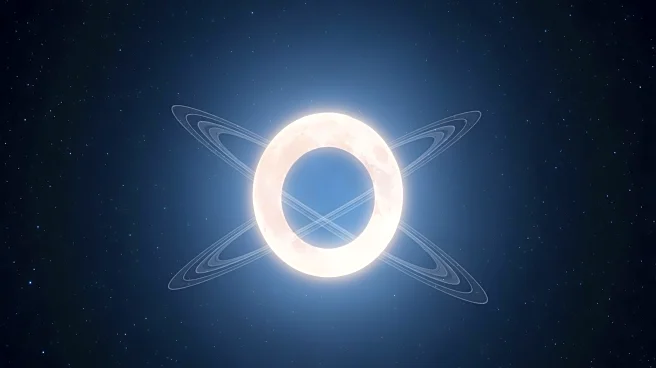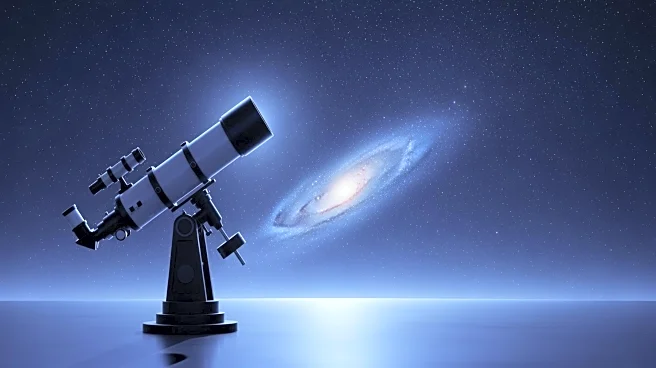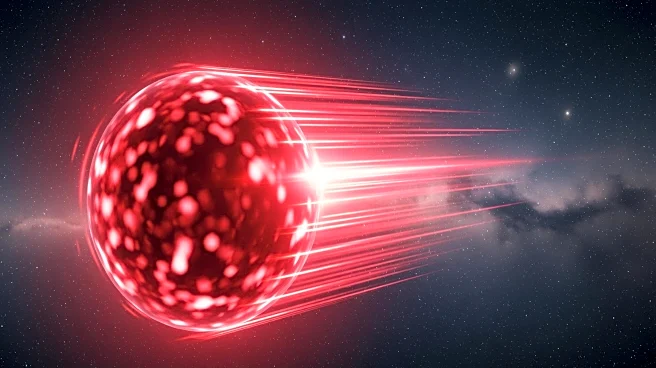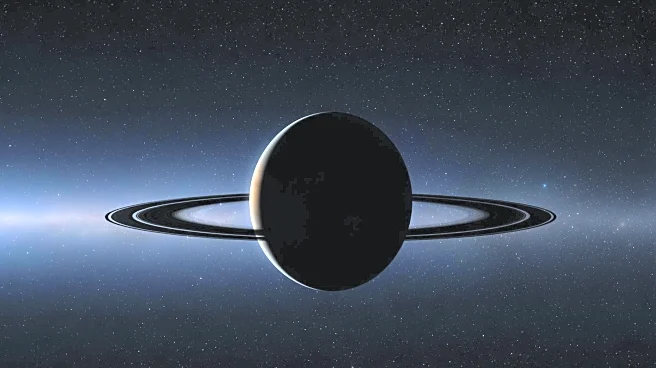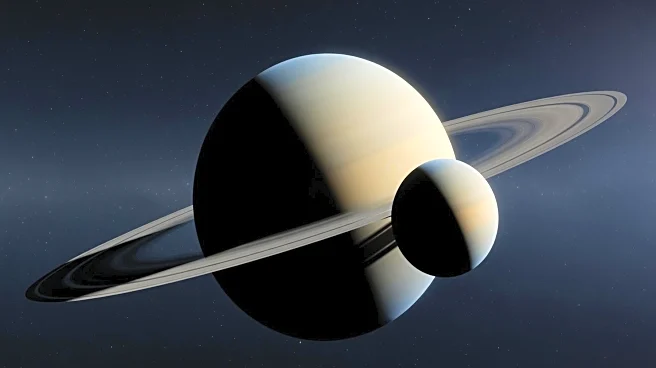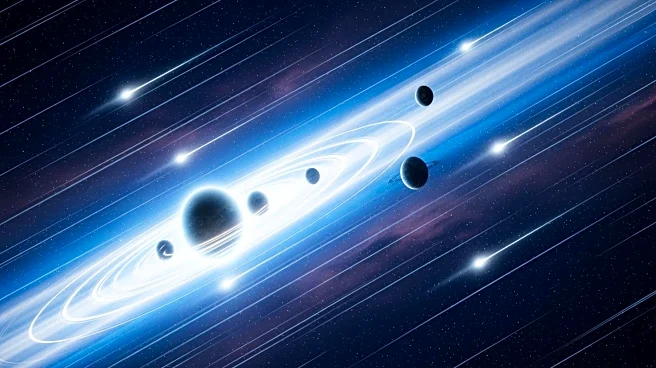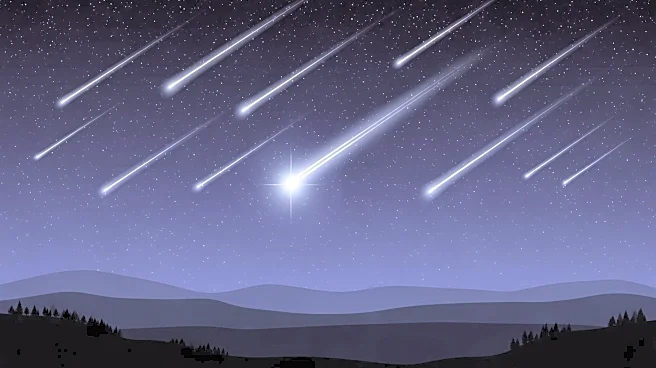What's Happening?
On November 24, 2025, the night sky presents a waxing crescent moon, Saturn with nearly invisible rings, and a rare lunar occultation of Sigma Sagittarii. The moon, about 15% illuminated, is visible low
in the west after sunset. Saturn's rings are positioned edge-on, making them appear almost invisible, a phenomenon that won't occur again until 2038. Additionally, a lunar occultation of Sigma Sagittarii is visible from a narrow path including the Falkland Islands, while other regions see a close pairing. The Leonid and Northern Taurid meteor showers are also active, offering modest meteor activity under dark skies.
Why It's Important?
This celestial event provides a unique opportunity for astronomers and skywatchers to observe Saturn's rings in a rare alignment, offering insights into the planet's ring dynamics. The lunar occultation of Sigma Sagittarii is a significant event for observers in specific regions, showcasing the moon's ability to obscure bright stars. These phenomena highlight the dynamic nature of the night sky and encourage public interest in astronomy. The meteor showers add to the spectacle, providing a chance for amateur astronomers to engage with the cosmos.
What's Next?
Observers can continue to track Saturn's ring alignment and the visibility of the lunar occultation as the night progresses. The Leonid and Northern Taurid meteor showers will remain active, with peak viewing opportunities under dark skies. As the month continues, Venus and Mercury will offer a close conjunction at dawn, providing another celestial event for skywatchers. Astronomers will analyze data from these events to enhance understanding of planetary and lunar dynamics.
Beyond the Headlines
The visibility of Saturn's rings and the lunar occultation offer educational opportunities to discuss the mechanics of celestial movements and their impact on observational astronomy. These events can inspire discussions about the importance of preserving dark skies for astronomical observations and the role of public engagement in science. The meteor showers serve as a reminder of the ongoing interactions between Earth and cosmic debris, highlighting the interconnectedness of the Solar System.
